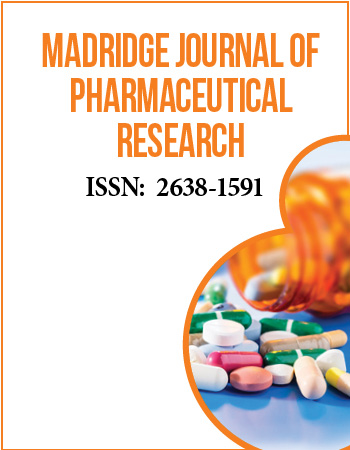2nd International Conference on Pharma & Nutrition, Health and Aging
August 1-2, 2019 Valencia, Spain
Modification Bioactive Compounds-Azomethins and Hydrazids with Adamantan Structure
1Geomedi University, Georgia
2Tbilisi State University, Georgia
3Sochumi State University, Georgia
The modification of bioactivity compounds azomethine and hydrazine by adamantane structure has been conducted to fight against rabies and human immunodeficiency virus. In particular, we have studied condensation of 1-aminoadamantane, 4-(1-adamantyl)amine and adamantoilhydrazine with aromatic type aldehydes as well as acylation of adamantoilhydrazine to the relevant acids chloranhydrides in different conditions, creating adamantane series N,N-diacylhydrazine with the presence of base agents. The bioscreening test revealed compounds with enhanced selective action in comparison with Gentamicin. By means of quantum-chemical method we determined the electronic structure and reactivity of the molecule of the compounds. It is a well know fact that. Adamantane derivatives greatly influence on the reproduction of the agents of viral and microbial infections. In this regard the most interesting are azomethines, which are characterized by a wide variety of pharmacological activities, among them they are active against rabies, herpes and human immunodeficiency virus. As the study of H NMR spectra revealed, in the weakest point the resonance signal is obtained from unsaturated hydrocarbon fragments of the proton and in the strong filed -Adamantane methylene protons. As for the amide hydrogen the chemical shift of the relevant proton (CDCI3) equals to δ8,04 ppm, in the deutero-dimethyl sulfoxide (compounds IV and V) respectively δ11,54 ppm and δ11,57 ppm. In the much weaker field phenolic hydroxyl (CD3)2 SO shifts into the solution due to the creation of strong hydrogen bonds (δ12,8 ppm). The resonance signals of N (CH3) group protons are revealed in a relatively strong field (δ3,0 ppm ). Aromatic protons (IV-IX) in the compounds corresponds to A2M2 type spectra; AM types spectrum is obtained by (VII, VIII, IX) compounds aromatic part, as for the X compound, PMR spectrum of its aromatic part belongs to AMX type. Changing of the solvent does not affect the chemical shift of the aromatic part of the spectrum. We also conducted the 13C NMR spectral analysis of (VIII, IX, X) synthesized compounds. The spectrum is clearly divided into 4 parts: 1) Sp3 hybridized carbon atoms range (adamantine groups) δ0-40 ppm; 2) Chemical shift of the Methyl group connected to negative electric element δ40-50 ppm; 3) Area of hybrid sp2 carbon atoms being into the composition of aromatic core; 4) The most de-screened carbon atoms in the composition of carbonyl group. As for N,N- diacylhydrazines NMR spectral analysis, their amide protons corresponding resonance signal is revealed from 8,8 up to 11,6 ppm (solvent (CD3)2SO), which are easily distinguished from the rest of the protons. Adamantane protons are located in the strongest part of the field and their shifting range is δ1, 68-2,14 ppm.


